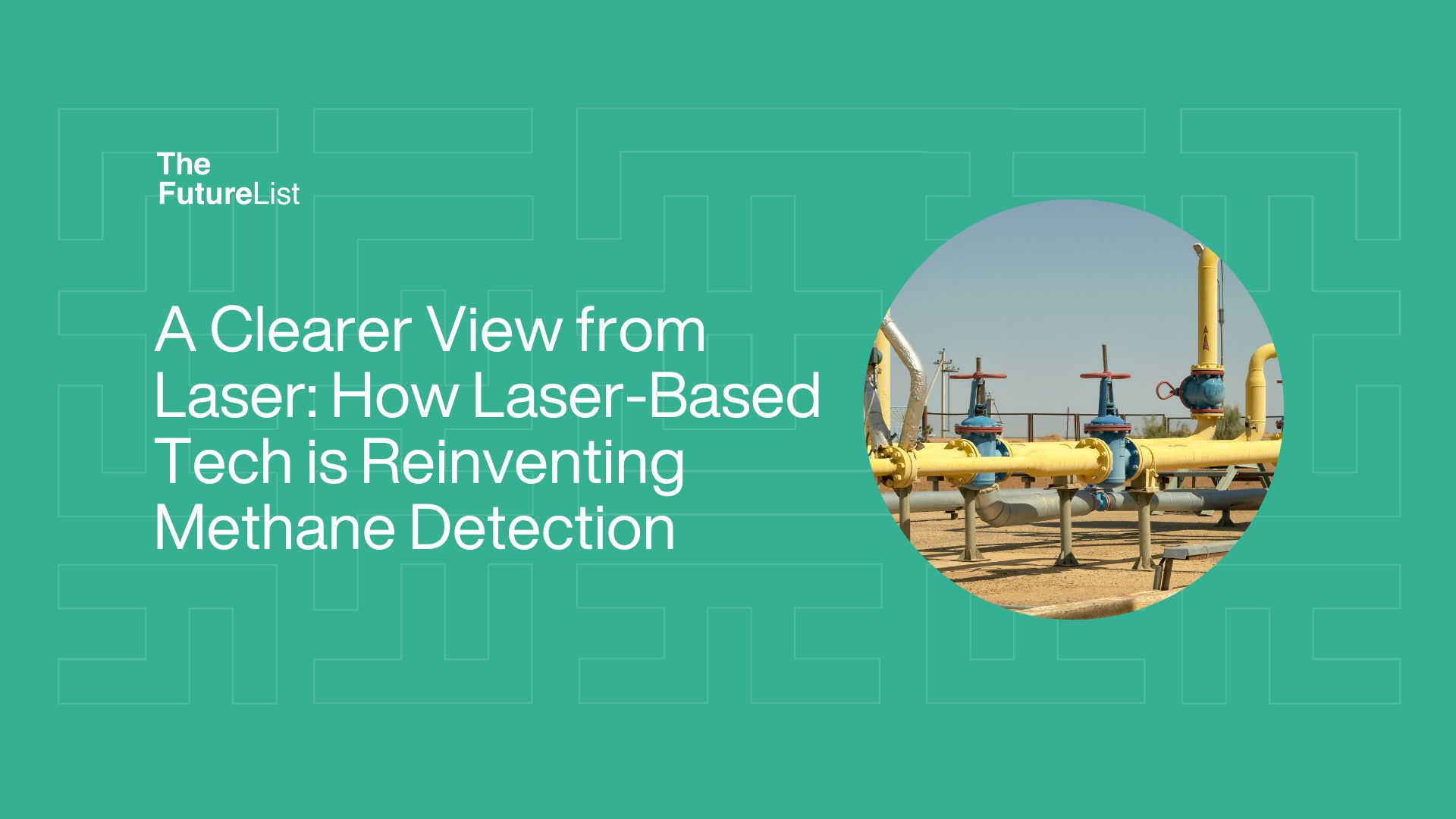
A Clearer View from Laser: How Laser-Based Tech is Reinventing Methane Detection
By Henry Duah
Methane is more than just a greenhouse gas; it’s a climate time bomb. According to the International Energy Agency (IEA), methane is responsible for approximately 30% of the rise in global temperatures since the pre-industrial era. Despite being shorter-lived in the atmosphere than CO₂, methane traps 80 times more heat over 20 years. The oil and gas industry remains one of the largest sources of methane emissions, accounting for roughly 40% of human-caused methane globally. Cutting methane emissions is one of the fastest and most effective ways to slow the rate of global warming.
Yet monitoring methane leaks has historically been a costly, time-consuming, and imprecise challenge. Traditional methods, including handheld sensors and periodic surveys, often miss intermittent or small-scale leaks. Enter a new era of innovation: laser-based methane detection technologies. These innovations offer real-time, high-resolution, wide-area coverage that transforms leak detection from reactive to proactive and even predictive.
Why Methane, and the Oil and Gas Industry?
According to the United Nations Environment Programme, methane emissions from oil and gas operations accelerate climate change and represent significant lost revenue, valued at over $30 billion annually. Leaks can occur during production, processing, transmission, and storage. Reducing these emissions improves safety and environmental performance and enhances operational efficiency.
The challenge, however, lies in detection and quantification. Many leaks are invisible, intermittent, or occur in hard-to-access infrastructure. Advanced laser technologies, particularly those that use frequency comb spectroscopy, tunable diode lasers, and quantum cascade lasers, now enable operators to identify and address leaks faster, cheaper, and more accurately.
Why Laser-based Methane Detection Matters
Laser-based methane detection isn’t just an environmental solution; it’s a business transformation tool. These technologies are helping the oil and gas industry pivot toward more sustainable and transparent operations. In a world rapidly shifting toward environmental accountability, these innovations signal a future where clean operations and profitability go hand in hand.
Innovations Spotlight
Mirico (HQ: United Kingdom; Est. 2015)
Mirico provides a next-generation emissions insight platform that continuously detects, localises, and quantifies methane emissions across industrial facilities. Using a unique laser-based sensor enhanced by patented Laser Dispersion Spectroscopy (LDS) technology, the system operates 24/7 in all weather conditions, delivering near real-time, automated measurements with parts-per-billion sensitivity. Covering up to 1 km² with a single sensor, Mirico’s end-to-end digital solution integrates powerful cloud analytics to support accurate emissions reporting and leak detection. Mirico helps clients reduce emissions cost-effectively, comply with regulations, and tap into low-carbon market opportunities.
LongPath Technologies (HQ: United States; Est. 2018)
Leveraging a decade of R&D, LongPath’s patented laser-based, continuous line sensor technology provides 24/7 real-time, quantitative data with high accuracy for detecting emissions as low as 0.06 kg/hr. Their site-specific data delivery system empowers operators with actionable insights, enabling proactive leak mitigation and alignment with global methane monitoring standards such as OGMP 2.0 and MiQ. LongPath’s system offers expansive asset coverage, including tanks and flares, unlike point sensors. With conditional approval already secured in New Mexico and Colorado and pending EPA approvals for OOOOa/b/c compliance, LongPath supports operators in reducing product loss, lowering compliance costs, and enhancing sustainability reporting.
Xplorobot (HQ: United States; Est. 2019)
Xplorobot is revolutionising methane emissions management with an EPA-approved handheld Laser Gas Imager, offering an alternative to traditional Optical Gas Imaging (OGI) cameras. Combining advanced methane detection sensors with computer vision, the device enables precise localisation and verification of leaks without requiring certified technicians. Validated by DOE’s METEC testing with a 92% actual positive rate and 1 gram/hour sensitivity, it empowers field personnel to detect, tag, and confirm repairs in a single visit, streamlining compliance and reducing operational costs. Xplorobot’s solution supports industries such as oil and gas, landfills, and maritime in meeting regulatory standards, cutting emissions-related fines, and achieving sustainability goals.
Get innovation insights from The FutureList weekly. Subscribe to our newsletter here
Categories
- Agritech
- Artificial Intelligence
- Biotech
- Blockchain
- Climate Tech
- Data Infrastructure
- Edtech
- Events
- Fashion
- Fintech
- Healthtech
- Infrastructure
- Innovation Memos
- Innovation Scout Program
- Insight
- Insurtech
- Machine Learning
- Martech
- Mobility
- Music and Media
- Partner Offers
- Perks
- Procurement
- Proptech
- Retailtech
- Ridehailing
- Ridesharing
- Robotics
- Space Aviation
- Supply Chain
- Talent
- Telecoms
- Uncategorized
- Venture Capital
- Wastetech
- Women In Tech